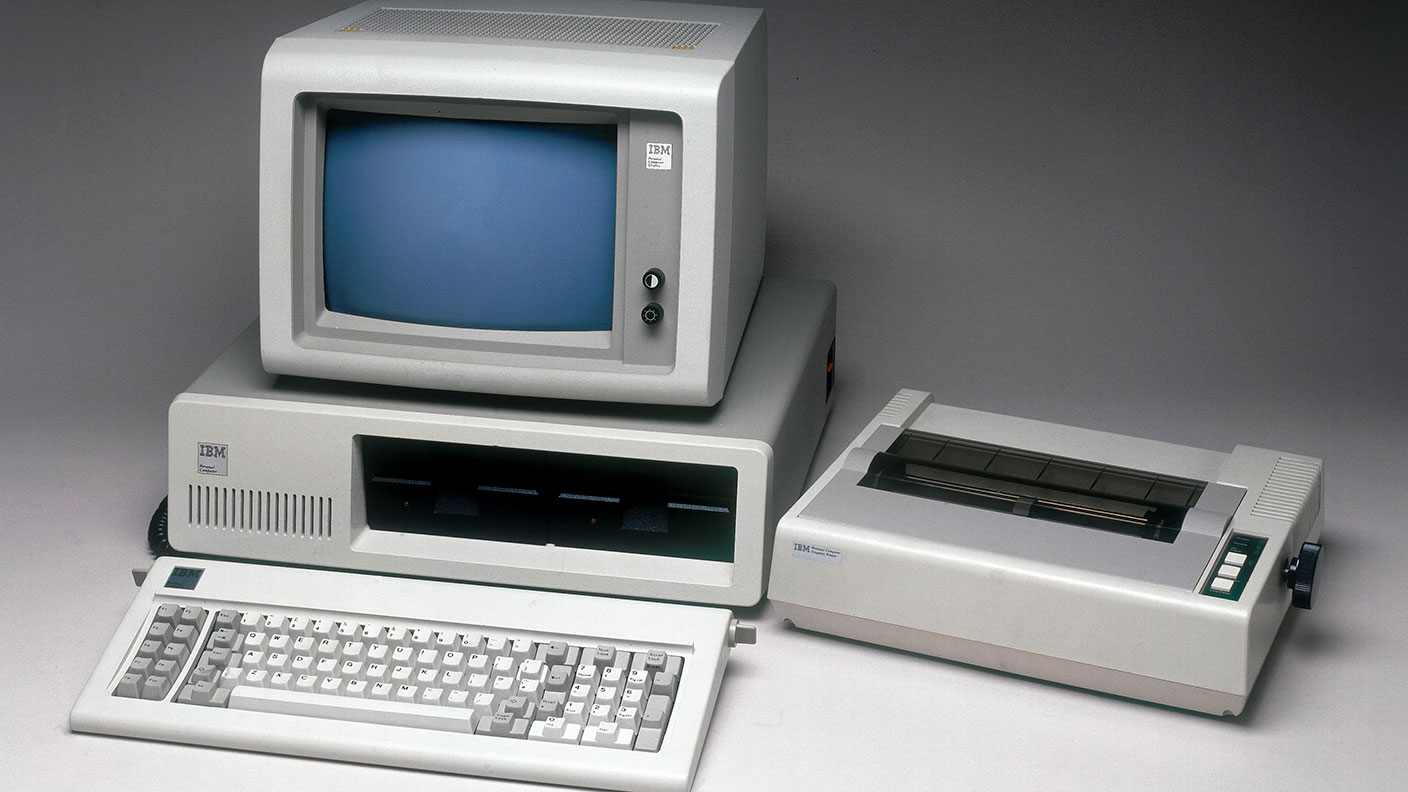12 August 1981: IBM launches the PC
On this day in August 1981 IBM revolutionised home computing with the launch of the PC 5150. It was a roaring success, with shops queueing up to sell it.


"Elephants don't gallop", so said legendary investor Jim Slater of companies too big to grow quickly. But they might be persuaded to dance.
Companies didn't come much bigger than IBM, the “Colossus of Armonk”. IBM's problem was that it was big, boring and slow to innovate. Its gig was selling computers the size of your living room to other boring companies. But during the 1970s, a revolution was underway.
As technology advanced, computers shrank, and so did the price. For the first time, ordinary punters stood a chance of owning one. Smaller, more nimble companies such as Apple, with their faster research and production times, were making hay. IBM was missing out.
MoneyWeek
Subscribe to MoneyWeek today and get your first six magazine issues absolutely FREE

Sign up to Money Morning
Don't miss the latest investment and personal finances news, market analysis, plus money-saving tips with our free twice-daily newsletter
Don't miss the latest investment and personal finances news, market analysis, plus money-saving tips with our free twice-daily newsletter
IBM was infamous for the slow pace of development for its products – about five years, far too slow to keep up with the pace of change. As one observer wryly noted, "IBM bringing out a personal computer would be like teaching an elephant to tap dance".
Luckily for IBM, it had a man who could do just that. His name was Don Estridge. A top boffin in the lab department, Estridge volunteered to lead “project Chess”. With his small band of scientists, they set out to design and build a personal computer to rival the Apple II. They worked round the clock, and by April 1981, the personal computer (PC) was all but ready. It had taken them just one year.
What IBM did next was truly revolutionary – so much so, in fact, that IBM surprised itself. It invited outsiders to make components for its computer and approached a little-known company to write its software – Microsoft.
On 12 August 1981, the IBM PC 5150 was unveiled at the Waldorf Astoria in New York. You would have had to shell out $1,565 to get your hands on one, but that wasn't bad when you think that 20 years earlier, a computer would have cost you $9m. That's assuming you had somewhere big enough to put it.
The IBM PC was small – about the size of a typewriter – and it proved overwhelmingly popular; a "roaring success" as Newsweek put it. By the end of 1982, shops were queueing up to sell it and IBM's little computer paved the way for home computing.
Get the latest financial news, insights and expert analysis from our award-winning MoneyWeek team, to help you understand what really matters when it comes to your finances.

-
 Boost for over 100,000 families on Child Benefit as new HMRC payment system rolled out
Boost for over 100,000 families on Child Benefit as new HMRC payment system rolled outThousands of households will no longer have to pay the dreaded High Income Child Benefit Charge through self-assessment
-
 Are you being haunted by the ghost of Christmas past? How festive cutbacks could boost your long-term wealth
Are you being haunted by the ghost of Christmas past? How festive cutbacks could boost your long-term wealthThe average family spends around £1,000 over the Christmas season. Here’s how much you could have gained if you had invested some of the money instead.
-
 31 August 1957: the Federation of Malaya declares independence from the UK
31 August 1957: the Federation of Malaya declares independence from the UKFeatures On this day in 1957, after ten years of preparation, the Federation of Malaya became an independent nation.
-
 13 April 1960: the first satellite navigation system is launched
13 April 1960: the first satellite navigation system is launchedFeatures On this day in 1960, Nasa sent the Transit 1B satellite into orbit to provide positioning for the US Navy’s fleet of Polaris ballistic missile submarines.
-
 9 April 1838: National Gallery opens in Trafalgar Square
9 April 1838: National Gallery opens in Trafalgar SquareFeatures On this day in 1838, William Wilkins’ new National Gallery building in Trafalgar Square opened to the public.
-
3 March 1962: British Antarctic Territory is created
Features On this day in 1962, Britain formed the British Antarctic Territory administered from the Falkland Islands.
-
10 March 2000: the dotcom bubble peaks
Features Tech mania fanned by the dawning of the internet age inflated the dotcom bubble to maximum extent, on this day in 2000.
-
9 March 1776: Adam Smith publishes 'The Wealth of Nations'
Features On this day in 1776, Adam Smith, the “father of modern economics”, published his hugely influential book The Wealth of Nations.
-
 8 March 1817: the New York Stock Exchange is formed
8 March 1817: the New York Stock Exchange is formedFeatures On this day in 1817, a group of brokers moved out of a New York coffee house to form what would become the biggest stock exchange in the world.
-
7 March 1969: Queen Elizabeth II officially opens the Victoria Line
Features On this day in 1969, Queen Elizabeth II took only her second trip on the tube to officially open the underground’s newest line – the Victoria Line.